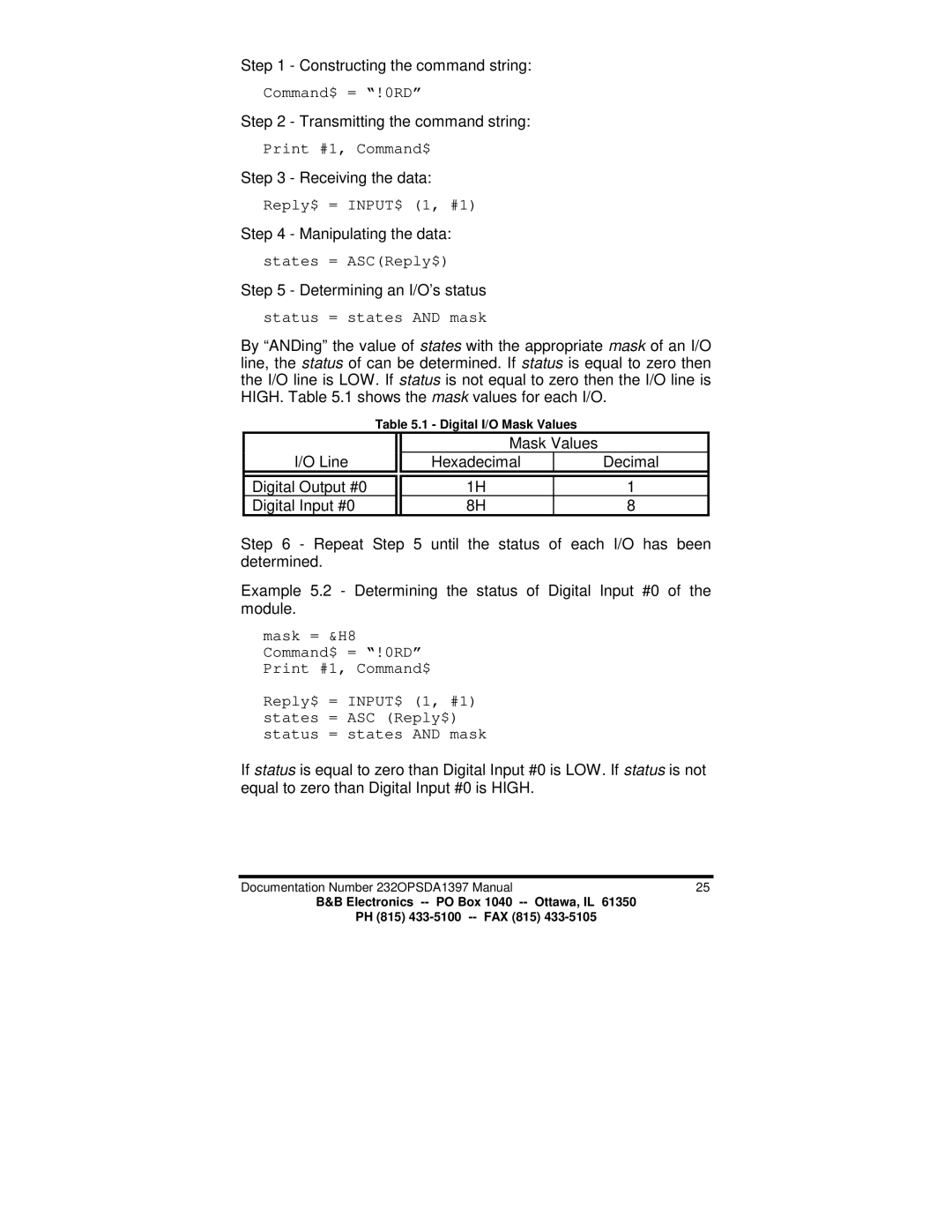Step 1 - Constructing the command string:
Command$ = “!0RD”
Step 2 - Transmitting the command string:
Print #1, Command$
Step 3 - Receiving the data:
Reply$ = INPUT$ (1, #1)
Step 4 - Manipulating the data:
states = ASC(Reply$)
Step 5 - Determining an I/O’s status
status = states AND mask
By “ANDing” the value of states with the appropriate mask of an I/O line, the status of can be determined. If status is equal to zero then the I/O line is LOW. If status is not equal to zero then the I/O line is HIGH. Table 5.1 shows the mask values for each I/O.
Table 5.1 - Digital I/O Mask Values
I/O Line |
| Mask Values |
| |
| Hexadecimal |
| Decimal | |
|
|
| ||
Digital Output #0 |
| 1H |
| 1 |
Digital Input #0 |
| 8H |
| 8 |
Step 6 - Repeat Step 5 until the status of each I/O has been determined.
Example 5.2 - Determining the status of Digital Input #0 of the module.
mask = &H8 Command$ = “!0RD” Print #1, Command$
Reply$ = INPUT$ (1, #1) states = ASC (Reply$) status = states AND mask
If status is equal to zero than Digital Input #0 is LOW. If status is not equal to zero than Digital Input #0 is HIGH.
Documentation Number 232OPSDA1397 Manual | 25 |
B&B Electronics
PH (815)
